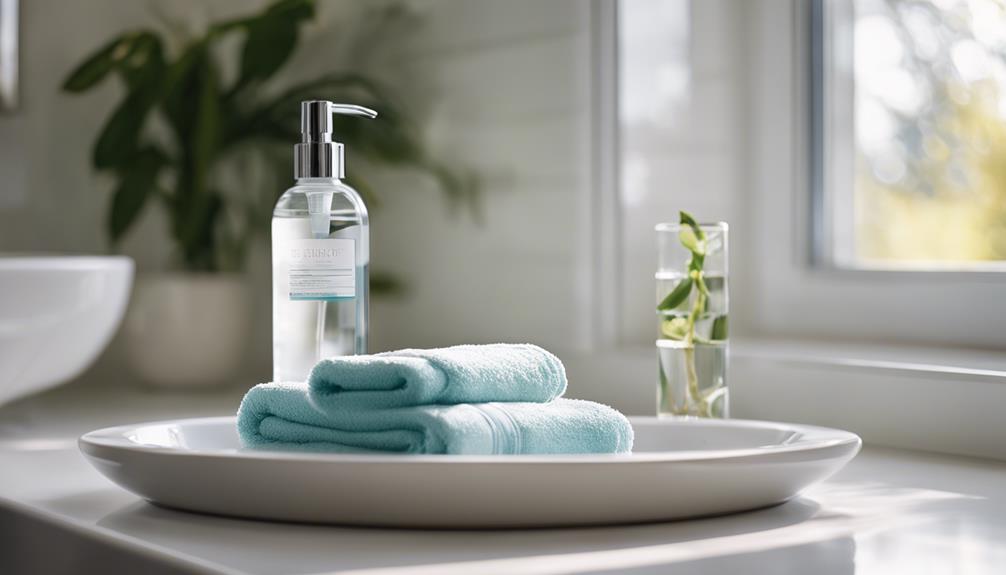For effective use of Differin Gel, apply a thin layer to clean, dry skin once daily in the evening. Begin with a gentle cleanser to ensure your skin is free from impurities. Use a pea-sized amount for optimal absorption, and follow with a non-comedogenic moisturizer to tackle dryness. Expect mild irritation at the start, which typically diminishes by week four. To reduce side effects, avoid using it with benzoyl peroxide or salicylic acid. Remember to wear broad-spectrum sunscreen during the day. Keep using it consistently for the best results, and there is much more to learn about optimizing your skincare routine!
Key Takeaways
- Apply a thin layer of Differin Gel to clean, dry skin once daily in the evening for optimal absorption.
- Use a gentle, non-comedogenic cleanser to remove impurities before applying Differin Gel.
- Follow up with a non-comedogenic moisturizer to combat dryness and irritation.
- Always apply broad-spectrum sunscreen (SPF 30+) during the day to protect sensitive skin.
Initial Application Guidelines
To get the most out of Differin Gel, start by applying a thin layer to your entire face once daily in the evening, ensuring your skin is clean and ready.
Before you apply Differin Gel, it's important to cleanse the skin thoroughly with a gentle cleanser. This step removes impurities and prepares your skin for better absorption, enhancing its effectiveness.
Incorporate Differin Gel into your daily skincare routine for best acne management. Consistent use is vital; skipping days can slow your progress and lead to setbacks. Initially, you might experience mild redness or irritation as your skin adjusts, but don't worry—these symptoms typically subside by week four.
After applying Differin Gel, follow up with a non-comedogenic moisturizer. This helps combat dryness, which can occur during the treatment.
Remember, for the most effective results, stick to your routine and be patient. Your skin may take some time to show improvement, but with dedication and consistent use, you'll likely see positive changes.
Keep your focus on your daily skincare routine, and soon enough, you'll appreciate the benefits of incorporating Differin Gel into your regimen.
Managing Side Effects
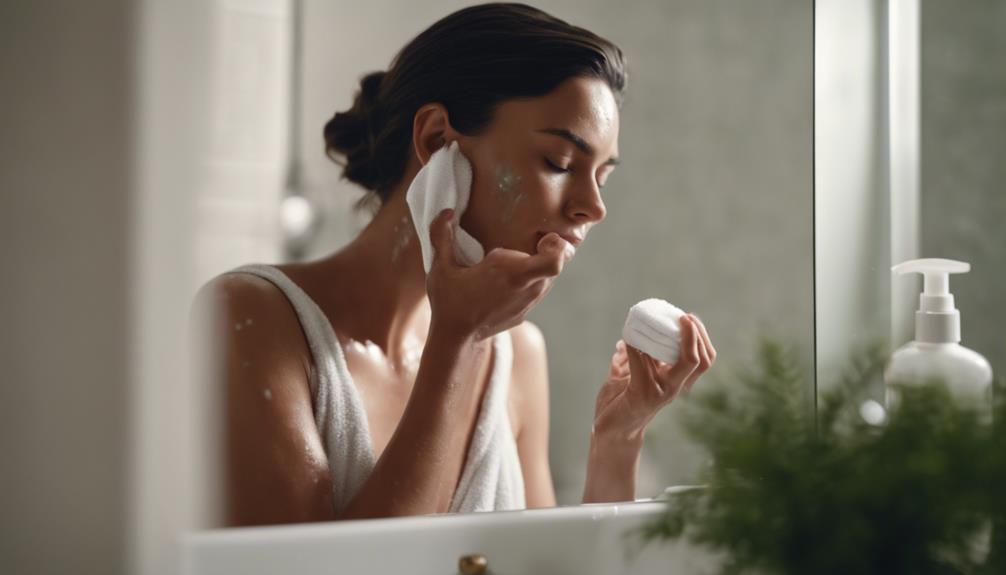
Managing side effects when using Differin Gel is essential for maintaining your skincare routine and ensuring the best results. During the initial weeks, you might experience mild redness and irritation, commonly known as retinization. This typically subsides by week 4, as your skin acclimates. To manage these side effects effectively, follow these best practices:
| Tips for Managing Side Effects | Description |
|---|---|
| Apply Moisturizer | Use a non-comedogenic moisturizer, like Differin Soothing Moisturizer, especially at night. |
| Consistency in Application | Keep applying Differin Gel daily, even with mild irritation, to avoid setbacks. |
| Reduce Frequency | If you experience severe irritation, consider applying Differin Gel every other night until your skin adjusts. |
| Avoid Active Ingredient Combos | Don't combine Differin Gel with benzoyl peroxide or salicylic acid to reduce irritation risk. |
Optimizing Your Routine
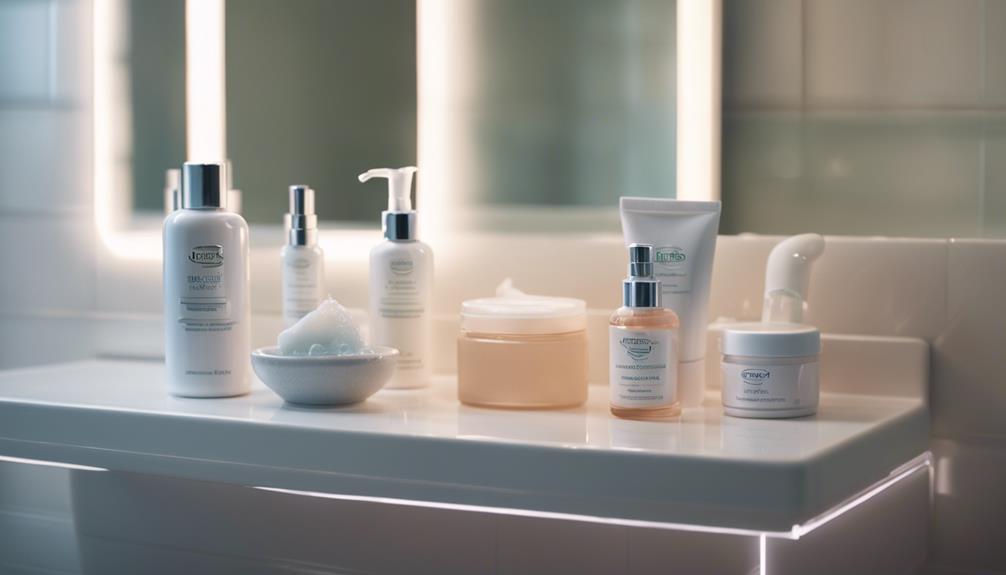
Incorporating Differin Gel into your evening skincare routine can greatly enhance your results when used correctly. Start by applying a pea-sized amount to clean, dry skin for ideal absorption.
To prevent irritation, use a gentle, non-comedogenic cleanser to verify your skin is free from impurities before application. After applying Differin Gel, always follow up with a hydrating, non-comedogenic moisturizer. This step is essential, especially during the initial adjustment phase, to combat dryness and maintain skin hydration.
During the day, remember to protect your skin by applying a broad-spectrum sunscreen (SPF 30+) daily, as Differin Gel increases skin sensitivity to UV rays.
When refining your routine, introduce other active treatments gradually. Begin with Differin Gel alone for the first week or two, evaluating your skin's tolerance to minimize irritation before adding new products. This gradual approach allows your skin to adjust without overwhelming it.
Understanding Retinization
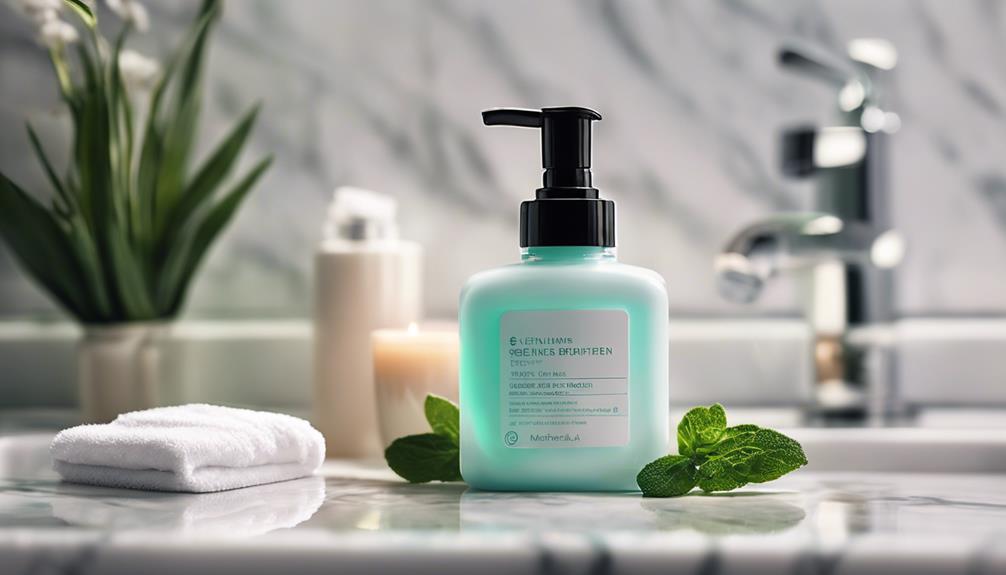
Retinization is the essential adjustment period your skin goes through as it adapts to the active ingredient adapalene in Differin Gel. This adjustment period typically lasts about four weeks and is vital for your skin's long-term health.
During retinization, you might experience common side effects like dryness, scaling, redness, and even some burning or stinging. It's important to remember that increased sensitivity and temporary acne flare-ups can also occur in the initial weeks after you apply Differin.
While these symptoms can be uncomfortable, dermatologists emphasize the need for patience during retinization. Most of these side effects should subside around the four-week mark as your skin acclimates to the treatment. Despite the initial skin irritation, Differin Gel is still working effectively underneath the surface, paving the way for future improvements.
As your skin adjusts, you'll start to notice acne reduction and a more refined texture. Trust the process, and remember that enduring this adjustment phase can lead to significant long-term benefits. Stay consistent with your routine, and soon enough, you'll reap the rewards of using Differin Gel.
Long-Term Benefits of Differin
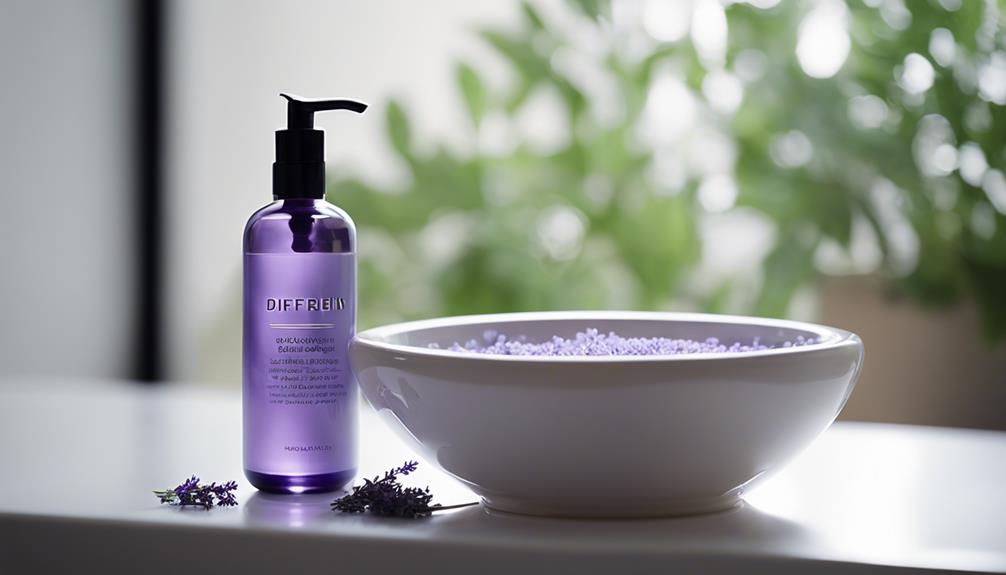
As you move past the initial adjustment phase, the long-term benefits of using Differin Gel become increasingly evident, leading to clearer and healthier skin. With consistent application, you can expect significant improvements in acne reduction and skin clarity over time. Clinical studies show that users can achieve up to an 87% reduction in acne by week 12, highlighting the gel's effectiveness.
| Benefit | Description |
|---|---|
| Acne Reduction | Up to 87% decrease in acne by week 12 |
| Skin Clarity | Improved overall appearance and smoothness |
| Skin Tone Restoration | Enhanced texture and even skin tone |
| Prevention of New Breakouts | Reduces the likelihood of future breakouts |
The prescription-strength formulation of Differin Gel offers these long-term benefits without needing a prescription, making it accessible for everyone. By incorporating Differin into your skincare routine, you're not just targeting existing issues; you're also preventing new breakouts. Over time, your skin will not only look healthier but feel it too, providing a lasting boost to your confidence.
Should Toner be Used Before or After Differin Gel in Skincare Routine?
When incorporating Differin Gel into your skincare routine, it’s important to follow the best practices for toner use. It’s recommended to use toner before applying Differin Gel to help balance the skin’s pH levels and remove any remaining traces of makeup or dirt. This can help optimize the effectiveness of the Differin Gel.
Conclusion
Incorporating Differin gel into your skincare routine can feel like starting a hero's journey, transforming your skin over time.
By following the guidelines, managing side effects, and understanding the retinization process, you're not just battling blemishes—you're paving the way for radiant skin.
Remember, every great transformation requires patience and care. Embrace the journey; the long-term benefits await, revealing a healthier, more confident version of yourself, just like a butterfly emerging from its chrysalis.
